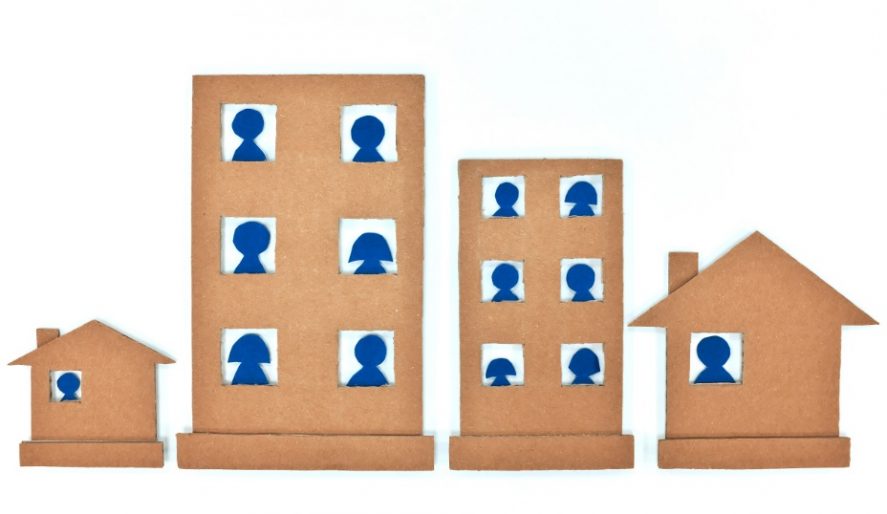The work-from-home phenomenon and pandemic continue to shift rental demand patterns across Canada as tenants look for cheaper locations farther from their place of employment.
According to the latest data from Rentals.ca, rents in September were down 9.5 per cent overall with rents in downtown Toronto for a one-bedroom home dropping below the 2,000 mark for the seventh straight month.
“Toronto is seeing the biggest decline in rental and condo apartment rental rates on average among major municipalities in Canada; this is driven by the rapid decline in downtown condo rents, with many recently completed buildings seeing rates drop by 10 to 15 per cent annually,” said Ben Myers, president of Bullpen Research & Consulting. “Several of the condos experienced listings growth of 100 per cent to 200 per cent annually—a textbook example of what happens with less demand and more supply.”
Rental demand in six GTA cities
Mississauga came in third for average monthly rent for a one-bedroom home at $1,932 and eighth for average monthly rent for a two-bedroom at $2,152.
Burlington finished fourth for average monthly rent for a one-bedroom home at $1,883 and 12th for average monthly rent for a two-bedroom at $2,009.
Oakville came in sixth for average monthly rent for a one-bedroom home at $1,841 and fourth for average monthly rent for a two-bedroom at $2,268.
North York finished seventh for average monthly rent for a one-bedroom home at $1,819 and for average monthly rent for a two-bedroom at $2,189. Year over year, average monthly rent for a one-bedroom was down 5.5 per cent in September and down 11.9 per cent for a two-bedroom.
Brampton came in 13th for average monthly rent for a one-bedroom home at $1,614 and 15th for average monthly rent for a two-bedroom at $1,904.
Oshawa finished 21st for average monthly rent for a one-bedroom home at $1,360 and 19th for average monthly rent for a two-bedroom at $1,661.
Influx of new supply
The decline in average monthly rent at downtown properties can be attributed to the high number of condos for rent, and there is a significant influx of new supply hitting the market via completed projects.
Adding to the challenging conditions, the reduction in demand for short-term rentals from tourist and out-of-town contract workers has added vacancies—as has the fact that many students attending downtown colleges and universities have remained at home for virtually learning.
Other major markets

Toronto and North York, along with Winnipeg, saw drops in rental rates of about 14 per cent. Toronto’s -14.1 per cent annual rent drop is the worst in the country among major markets.
Montreal (17.2 per cent) and Kitchener (11.5 per cent) were the only two major municipalities in all of Canada to see rent appreciation for apartments and condo rentals. (Hamilton and London were removed from the chart because of a high number of listings from new purpose-built rental apartment projects pulling the average rent up).
Vancouver posted the highest average annual rent for apartments and condo rentals at $2,249, followed by Toronto at $2,158; Etobicoke next at $2,095; Mississauga at $2,066; and Vaughan at $2,044. North York is the only other municipality showing average annual rents of above $2,000 per month at $2,025.
In Vancouver, the average rent for single-family homes in the third quarter was $2,553 per month, lower than condo apartments, and down 29 per cent annually. Condo rents in Vancouver are down 17 per cent in Q3-2020 versus Q3-2019.
The most bizarre results are in Montreal, where average condo rents were down 17 per cent annually while the average rental apartment rents were up 20 per cent. According to Rentals.ca changes in the location, unit size, balcony size, level of finish, or unit views can vary significantly from quarter to quarter and impact the rental rates charged by landlords. Secondly, owners of rental apartments are more likely to offer rental incentives like a month or two free rent.
Other key takeaways from the October National Rent Report:
- Lloydminster had the lowest average monthly rent of the 35 cities listed for a one-bedroom home in September at $737, and Prince Albert had the lowest average monthly rent for a two-bedroom at $855.
- On a provincial level, British Columbia had an average rent of $2,065 per month, edging out Ontario ($2,040) for the highest average rents in September for all property types. British Columbia was one of just two provinces to post positive year-over-year rent growth, joining Quebec.
- The average monthly rent is down for all bedroom types in Canada with one-bedroom suites falling 6.3 per cent annually to just under $1,600. Two-bedroom units fell by 5.4 per cent year over year to about $1,890 per month. Three-bedroom units in the third quarter declined from $2,258 per month to $2,155 per month, a 4.6 per cent decline. Four-bedroom homes saw the smallest drop (-3.6 per cent) to $2,725 per month.
- The latest employment data suggests Canada added nearly 380,000 jobs in September, and analysts have estimated that 75 per cent of employees who lost their jobs during the early months of the pandemic have been rehired or found new work.
- With schools open and day cares re-opening, and the paring back of government assistance programs, more Canadians have the ability and motivation to return to work, and/or look for work. More employed Canadians and more hiring results in more demand for housing, and could send the rental trendline climbing upward again this winter.
The complete rent report can be found at: Rentals.ca





